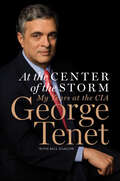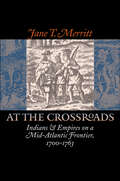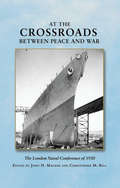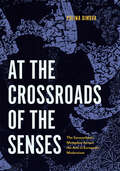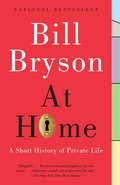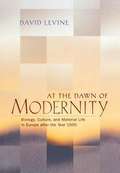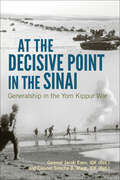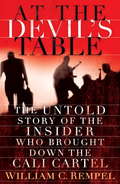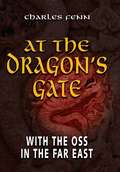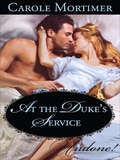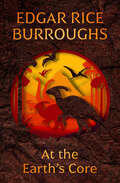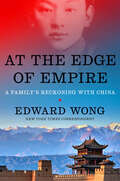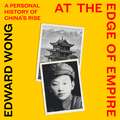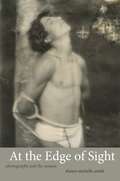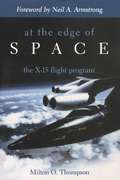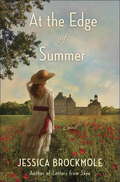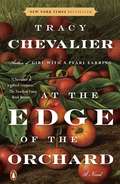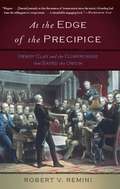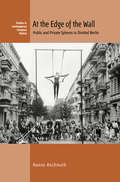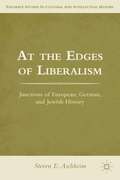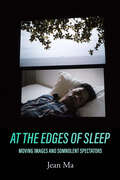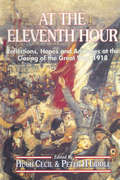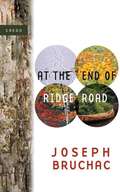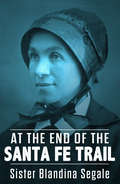- Table View
- List View
At the Center of the Storm: My Years at the CIA
by George Tenet Bill Harlow#1 New York Times Bestseller: The former CIA director’s “remarkable” personal account of the mistakes and failures that led to 9/11 and the Iraq War (Bob Woodward, The Washington Post).In this candid memoir, George Tenet recounts his time at the Central Intelligence Agency in the dramatic years between 1997 and 2004. With unparalleled access to the highest echelons of government and raw intelligence from the field, he illuminates the CIA’s painstaking attempts to prepare the country against new and deadly threats, disentangles the interlocking events that led to 9/11, and reveals information on the deliberations and strategies that culminated in the invasion of Iraq.Tenet unfolds momentous events as he experienced them: his declaration of war on al-Qa’ida; the CIA’s covert operations inside Afghanistan; the worldwide operational plan to fight terrorists; his warnings of imminent attacks against American interests to White House officials in the summer of 2001; and the plan for a coordinated and devastating counterattack against al-Qa’ida laid down just six days after the attacks.Tenet’s compelling narrative then turns to the run-up to the Iraq War, including a firsthand account of the fallout from the inclusion of “sixteen words” in the president’s 2003 State of the Union address; the true context of Tenet’s own famous “slam dunk” comment regarding Saddam’s WMD program; and the CIA’s critical role in an administration predisposed to take the country to war. In doing so, he sets the record straight about CIA operations and shows that the truth is more complex than many believe.Throughout, Tenet paints an unflinching self-portrait of a man caught between the warring forces of the administration’s decision-making process, the reams of frightening intelligence pouring in from around the world, and his own conscience—in a moving, revelatory profile of both an individual and a nation in crisis, and a revealing look at the inner workings of the world’s most important intelligence organization at an extraordinarily challenging time.“Tenet does not shy away from acknowledging his own responsibility in controversies involving terrorism and the Iraq War, but he also takes several key political leaders to task for scapegoating the intelligence community in the wake of unpopular policy.” —Publishers Weekly
At the Crossroads
by Jane T. MerrittExamining interactions between native Americans and whites in eighteenth-century Pennsylvania, Jane Merritt traces the emergence of race as the defining difference between these neighbors on the frontier. Before 1755, Indian and white communities in Pennsylvania shared a certain amount of interdependence. They traded skills and resources and found a common enemy in the colonial authorities, including the powerful Six Nations, who attempted to control them and the land they inhabited. Using innovative research in German Moravian records, among other sources, Merritt explores the cultural practices, social needs, gender dynamics, economic exigencies, and political forces that brought native Americans and Euramericans together in the first half of the eighteenth century. But as Merritt demonstrates, the tolerance and even cooperation that once marked relations between Indians and whites collapsed during the Seven Years' War. By the 1760s, as the white population increased, a stronger, nationalist identity emerged among both white and Indian populations, each calling for new territorial and political boundaries to separate their communities. Differences between Indians and whites--whether political, economic, social, religious, or ethnic--became increasingly characterized in racial terms, and the resulting animosity left an enduring legacy in Pennsylvania's colonial history.
At the Crossroads Between Peace and War
by Christopher Bell John H. MaurerA great power arms race in naval weaponry and platforms, rising challengers seeking to overturn the existing international order in Asia, an economic slump that put immense pressure on politicians in democracies to trim defense budgets, and diplomatic efforts by statesmen to find ways to promote mutual security and avoid rivalries that could lead to war-all these features mark the current-day strategic environment. These features also marked in the era between the two world wars. To prevent the naval rivalries that augured international conflict, statesmen and naval leaders sought to negotiate arms control agreement. Their efforts to avert a great power naval arms race were crowned with achievement at the London Conference of 1930.What was accomplished at London, of course, did not prove lasting; nor did it lead to additional meaningful arms control and prevent future wars. Instead, London proved a dead end in the evolution of interwar international relations. The London Treaty marked the high point of interwar arms control. When measured against the magnitude of the international catastrophe that would unfold over the next decade, this achievement in arms control now appears practically meaningless at best and dangerous at worst. Critics of interwar arms control argue that, by weakening of American and British naval power, as well as stirring up extremist nationalism in Japanese internal politics, the London agreement represents a case study in political folly that contributed to the awful events leading to the war. The London Conference of 1930 thus represents a watershed, a turning point in the history of the interwar period.In this volume, leading naval historians tackle the question of how to assess the role played by naval arms control in the history of the interwar period. In addressing this important question, the authors uncover new evidence about the role of intelligence and behind-the-scenes political deal making that adds much to our knowledge of the international and naval history of this important era. This volume's authors provide the first complete account of the strategic calculations and negotiations that shaped the outcome at the London Conference. No one interested in twentieth-century naval history, international relations and the rivalries of rising and declining great powers, and the origins of the Second World War can afford to miss this important new history.
At the Crossroads of the Senses: The Synaesthetic Metaphor Across the Arts in European Modernism (Perspectives on Sensory History)
by Polina DimovaInspired by Richard Wagner’s idea of the total artwork, European modernist artists began to pursue multimedia projects that mixed colors, sounds, and shapes. Polina Dimova’s At the Crossroads of the Senses traces this new sensory experience of synaesthesia—the physiological or figurative blending of senses—as a modernist phenomenon from its scientific description in the late nineteenth century to its prevalence in the early twentieth.Structured around twenty theses on synaesthesia, this book explores the integral relationship between modernist art, science, and technology, tracing not only how modernist artists perceptually internalized and absorbed technology and its effects but also how they appropriated it to achieve their own aesthetic, metaphysical, and social goals. Through case studies of prominent multimodal artists—Oscar Wilde, Aubrey Beardsley, Richard Strauss, Aleksandr Scriabin, Wassily Kandinsky, František Kupka, Andrei Bely, and Rainer Maria Rilke—At the Crossroads of the Senses reveals the color-forms and color-sounds that, for these artists, laid the foundations of the world and served as the catalyst for the flourishing exchanges among the arts at the fin de siècle.Rooted in archival research in Russia, Germany, France, and the Czech Republic, At the Crossroads of the Senses taps overlooked scientific sources to offer a fresh perspective on European modernism. Sensory studies scholars, literary critics, and art and music historians alike will welcome its many contributions, not least among them a refreshing advocacy for a kind of sensuous reading practice.
At the Dark End of the Street: Black Women, Rape, and Resistance--A New History of the Civil Rights Movement from Rosa Parks to the Rise of Black Power
by Danielle L. McGuireHere is the courageous, groundbreaking story of Rosa Parks and Recy Taylor—a story that reinterprets the history of America's civil rights movement in terms of the sexual violence committed against Black women by white men. "An important step to finally facing the terrible legacies of race and gender in this country.&” —The Washington PostRosa Parks was often described as a sweet and reticent elderly woman whose tired feet caused her to defy segregation on Montgomery&’s city buses, and whose supposedly solitary, spontaneous act sparked the 1955 bus boycott that gave birth to the civil rights movement. The truth of who Rosa Parks was and what really lay beneath the 1955 boycott is far different from anything previously written. In this groundbreaking and important book, Danielle McGuire writes about the rape in 1944 of a twenty-four-year-old mother and sharecropper, Recy Taylor, who strolled toward home after an evening of singing and praying at the Rock Hill Holiness Church in Abbeville, Alabama. Seven white men, armed with knives and shotguns, ordered the young woman into their green Chevrolet, raped her, and left her for dead. The president of the local NAACP branch office sent his best investigator and organizer—Rosa Parks—to Abbeville. In taking on this case, Parks launched a movement that exposed a ritualized history of sexual assault against Black women and added fire to the growing call for change.
At the Dawn of Belt and Road: China in the Developing World (G - Reference, Information and Interdisciplinary Subjects)
by Michael Johnson Howard J. Shatz Michael S. Chase Andrew Scobell Larry Hanauer Bonny Lin Arthur Chan Astrid Stuth Cevallos Ivan W. Rasmussen Aaron Strong Eric Warner Logan MaChina has always viewed itself as a vulnerable underdeveloped country. In the 1990s, it began negotiating economic agreements and creating China-centric institutions, culminating in the 2000s in numerous institutions and ultimately the Belt and Road Initiative. The authors analyze China’s political and diplomatic, economic, and military engagement with the Developing World and discuss specific countries that are most important to China.
At the Dawn of Modernity: Biology, Culture, and Material Life in Europe After the Year 1000
by David LevineAn accessible introduction to the origins of the modern Western world, using demographic history as a lens for examining possible accounts of transformations of economic, political, and domestic life in Western Europe between A. D. 1000 and 1400.
At the Decisive Point in the Sinai: Generalship in the Yom Kippur War (Foreign Military Studies)
by General Jacob Even Colonel Simcha B. MaozA commander and an officer with the IDF recount their experiences in the Yom Kippur War, offering insight into Israel&’s military leadership.At the Decisive Point in the Sinai is a firsthand account of Operation Stouthearted Men—arguably the 1973 Yom Kippur War&’s most intense engagement. General Jacob Even and Colonel Simcha B. Maoz were key leaders in Major General Ariel Sharon&’s division. Together, Even and Maoz recount the initial stages of the Suez crossing, examine the Israel Defense Forces&’ (IDF) response to Egypt&’s surprise attack, and explain Sharon&’s role in the transition from defense to offense. They detail Sharon&’s struggle to convince his superiors of his plan and argue that an effective division commander is not only revealed by his leadership of subordinates but also by his ability to influence his senior officers. Even and Maoz challenge students of military leadership by offering a case study on effective leadership. &“At the Decisive Point is the single best volume I have ever read on the Yom Kippur War. It bridges the gap between the two standard forms of writing on the 1973 conflict?the memoir and the historical monograph?and does so in a very effective manner.&” —Robert M. Citino, author of The Wehrmacht Retreats: Fighting a Lost War, 1943 &“The authors&’ work, in sum, presents an interesting and informative account of the Yom Kippur War on the Sinai front.&” —Israel Affairs
At the Devil's Table
by William C. RempelIn this riveting and relentless nonfiction thriller, award-winning investigative reporter William C. Rempel tells the harrowing story of former Cali cartel insider Jorge Salcedo, an ordinary man facing an extraordinary dilemma--a man forced to risk everything to escape the powerful and treacherous Cali crime syndicate. Colombia in the 1990s is a country in chaos, as a weak government battles guerrilla movements and narco-traffickers, including the notorious Pablo Escobar and his rivals in the Cali cartel. Enter Jorge Salcedo, a part-time soldier, a gifted engineer, a respected businessman and family man--and a man who despises Pablo Escobar for patriotic and deeply personal reasons. He is introduced to the godfathers of the Cali cartel, who are at war with Escobar and desperately want their foe dead. With mixed feelings, Jorge agrees to help them. Once inside, Jorge rises to become head of security for Miguel Rodríguez Orejuela, principal godfather of the $7-billion-a-year Cali drug cartel. Jorge tries to turn a blind eye to the violence, corruption, and brutality that surround him, and he struggles privately to preserve his integrity even as he is drawn deeper into the web of cartel operations. Then comes an order from the godfathers that he can't obey--but can't refuse. Jorge realizes that his only way out is to bring down the biggest, richest crime syndicate of all time. Thus begins a heart-pumping roller-coaster ride of intensifying peril. Secretly aided by a pair of young American DEA agents, Jorge races time and cartel assassins to extract damaging evidence, help capture the fugitive godfather, and save the life of a witness targeted for murder. Through it all, death lurks a single misstep away. William C. Rempel is the only reporter with access to this story and to Jorge, who remains in hiding somewhere in the United States--even the author doesn't know where--but has revealed his experience in gripping detail. Salcedo's is the story of one extraordinary ordinary man forced to risk everything to end a nightmare of his own making.From the Hardcover edition.
At the Dragon's Gate
by Charles FennIn the early days of World War II, a young Marine named Charles Fenn was recruited by the Office of Strategic Services (OSS) for undercover operations in the China-Burma-India theatre. Fenn knew exactly what it took to get the job done. His wartime exploits are the stuff of legend, but not even his OSS compatriots knew the full extent of his espionage activities. Fenn's skill as a spy is matched by his talent as a storyteller, and this witty, elegantly written account of his OSS days not only adds to the historical record, it makes for a compelling read.
At the Duke's Service (Undone!)
by Carole MortimerThe last thing Alexander St. Claire, Duke of Stourbridge, expected was Angelina Hawkins arriving on his doorstep ready to become his mistress! He thought his ward was a little girl, not a beautiful and bold young woman with uncanny knowledge of the arts of seduction. Alexander knows he should resist, for it would be only too easy to lose himself in her forever...
At the Earth's Core
by Edgar Rice BurroughsTwo men uncover a savage Stone Age society underground in this classic fantasy adventure by the author of Tarzan of the Apes and John Carter of Mars. The Iron Mole is a giant machine meant to excavate for mineral deposits. Instead, it takes David Innes, a wealthy mining heir, and Abner Perry, a genius inventor, five hundred miles down through the Earth’s crust to a world unlike any they’ve ever seen. In the land of Pellucidar, the Earth's fiery core functions as the sun, providing eternal daylight. Prehistoric monsters roam through lush jungles. Deadly flying reptiles called Mahars enslave ape-like servants and primitive humans. And escape could cost you your life . . . First published in 1914 as a serial, At the Earth’s Core was the first of seven Edgar Rice Burroughs novels set in the fantastical subterranean world of Pellucidar.
At the Edge of Empire: A Family's Reckoning with China
by Edward Wong&“This book&’s power comes from Wong&’s broad sense of the patterns of Chinese history, reflected in the lives of a father and son, and from his ability to toggle effortlessly between the epic and the intimate.&” —Gal Beckerman, The Atlantic&“Edward Wong&’s exquisite family chronicle achieves a level of humane illumination that only one of America&’s finest reporters on China could deliver. In tracing his father&’s journey—from Hong Kong to Xinjiang to America—Wong gives us a profound story of modern China itself. Anyone who once was absorbed by the power of Wild Swans will savor this meditation on memory, history, and belonging.&” —Evan Osnos, author of Age of Ambition, winner of the National Book AwardOne of Foreign Policy&’s Most Anticipated Books of 2024An epic story of modern China that weaves a riveting family memoir with vital reporting by the New York Times diplomatic correspondentThe son of Chinese immigrants in Washington, DC, Edward Wong grew up among family secrets. His father toiled in Chinese restaurants and rarely spoke of his native land or his years in the People&’s Liberation Army under Mao. Yook Kearn Wong came of age during the Japanese occupation in World War II and the Communist revolution, when he fell under the spell of Mao&’s promise of a powerful China. His astonishing journey as a soldier took him from Manchuria during the Korean War to Xinjiang on the Central Asian frontier. In 1962, disillusioned with the Communist Party, he made plans for a desperate escape to Hong Kong.When Edward Wong became the Beijing bureau chief for The New York Times, he investigated his father&’s mysterious past while assessing for himself the dream of a resurgent China. He met the citizens driving the nation&’s astounding economic boom and global expansion—and grappling with the vortex of nationalistic rule under Xi Jinping, the most powerful leader since Mao. Following in his father&’s footsteps, he witnessed ethnic struggles in Xinjiang and Tibet and pro-democracy protests in Hong Kong. And he had an insider&’s view of the world&’s two superpowers meeting at a perilous crossroads.Wong tells a moving chronicle of a family and a nation that spans decades of momentous change and gives profound insight into a new authoritarian age transforming the world. A groundbreaking book, At the Edge of Empire is the essential work for understanding China today.
At the Edge of Empire: A Family's Reckoning with China
by Edward WongWhen New York Times correspondent Edward Wong arrived in Beijing in 2008, he had a hopeful view of a coming Chinese century. Nearly sixty years earlier, his father held a similarly optimistic vision - and joined the People's Liberation Army to further Mao's revolution. But both men were forced to confront the hard realities of CommunistParty rule.Drawing on family interviews and his reporting, Edward Wong unveils the continuous inner history of China under Xi Jinping and Mao. But the parallel journeys of father and son also illustrate startling shifts over the decades.With beautiful writing, sweeping narrative, and news-breaking insight into contemporary China, At the Edge of Empire is required reading for anyone looking to understand global politics in the 21st century. Edward Wong takes the reader straight into the heart of the Hong Kong protests, the upheavals in Xinjiang and the halls of power in Beijing and Washington.
At the Edge of Sight: Photography and the Unseen
by Shawn Michelle SmithThe advent of photography revolutionized perception, making visible what was once impossible to see with the human eye. In At the Edge of Sight, Shawn Michelle Smith engages these dynamics of seeing and not seeing, focusing attention as much on absence as presence, on the invisible as the visible. Exploring the limits of photography and vision, she asks: What fails to register photographically, and what remains beyond the frame? What is hidden by design, and what is obscured by cultural blindness? Smith studies manifestations of photography's brush with the unseen in her own photographic work and across the wide-ranging images of early American photographers, including F. Holland Day, Eadweard Muybridge, Andrew J. Russell, Chansonetta Stanley Emmons, and Augustus Washington. She concludes by showing how concerns raised in the nineteenth century remain pertinent today in the photographs of Abu Ghraib. Ultimately, Smith explores the capacity of photography to reveal what remains beyond the edge of sight.
At the Edge of Space: The X-15 Flight Program
by Milton O. ThompsonIn At the Edge of Space, Milton O. Thompson tells the dramatic story of one of the most successful research aircraft ever flown. The first full-length account of the X-15 program, the book profiles the twelve test pilots (Neil Armstrong, Joe Engle, Scott Crossfield, and the author among them) chosen for the program. Thompson has translated a highly technical subject into readable accounts of each pilot's participation, including many heroic and humorous anecdotes and highlighting the pilots' careers after the program ended in 1968.
At the Edge of Summer: A Novel
by Jessica BrockmoleThe acclaimed author of Letters from Skye returns with an extraordinary story of a friendship born of proximity but boundless in the face of separation and war. Luc Crépet is accustomed to his mother's bringing wounded creatures to their idyllic château in the French countryside, where healing comes naturally amid the lush wildflowers and crumbling stone walls. Yet his maman's newest project is the most surprising: a fifteen-year-old Scottish girl grieving over her parents' fate. A curious child with an artistic soul, Clare Ross finds solace in her connection to Luc, and she in turn inspires him in ways he never thought possible. Then, just as suddenly as Clare arrives, she is gone, whisked away by her grandfather to the farthest reaches of the globe. Devastated by her departure, Luc begins to write letters to Clare--and, even as she moves from Portugal to Africa and beyond, the memory of the summer they shared keeps her grounded. Years later, in the wake of World War I, Clare, now an artist, returns to France to help create facial prostheses for wounded soldiers. One of the wary veterans who comes to the studio seems familiar, and as his mask takes shape beneath her fingers, she recognizes Luc. But is this soldier, made bitter by battle and betrayal, the same boy who once wrote her wistful letters from Paris? After war and so many years apart, can Clare and Luc recapture how they felt at the edge of that long-ago summer? Bringing to life two unforgettable characters and the rich historical period they inhabit, Jessica Brockmole shows how love and forgiveness can redeem us. Praise for Jessica Brockmole's Letters From Skye "A remarkable story of two women, their loves, their secrets, and two world wars [in which] the beauty of Scotland, the tragedy of war, the longings of the heart, and the struggles of a family torn apart by disloyalty are brilliantly drawn."--Publishers Weekly (starred review) "Tantalizing . . . sure to please readers who enjoyed other epistolary novels like The Guernsey Literary and Potato Peel Pie Society."--Stratford Gazette "An absorbing and rewarding saga of loss and discovery."--Kate Alcott, author of The Dressmaker "A sweeping and sweet (but not saccharine) love story."--USA Today "[A] dazzling little jewel."--Richmond Times-Dispatch "A captivating love story that celebrates the power of hope."--Vanessa Diffenbaugh, author of The Language of FlowersFrom the Hardcover edition.
At the Edge of the Orchard
by Tracy ChevalierFrom internationally bestselling author Tracy Chevalier, a riveting drama of a pioneer family on the American frontier1838: James and Sadie Goodenough have settled where their wagon got stuck - in the muddy, stagnant swamps of northwest Ohio. They and their five children work relentlessly to tame their patch of land, buying saplings from a local tree man known as John Appleseed so they can cultivate the fifty apple trees required to stake their claim on the property. But the orchard they plant sows the seeds of a long battle. James loves the apples, reminders of an easier life back in Connecticut; while Sadie prefers the applejack they make, an alcoholic refuge from brutal frontier life. 1853: Their youngest child Robert is wandering through Gold Rush California. Restless and haunted by the broken family he left behind, he has made his way alone across the country. In the redwood and giant sequoia groves he finds some solace, collecting seeds for a naturalist who sells plants from the new world to the gardeners of England. But you can run only so far, even in America, and when Robert's past makes an unexpected appearance he must decide whether to strike out again or stake his own claim to a home at last. Chevalier tells a fierce, beautifully crafted story in At the Edge of the Orchard, her most graceful and richly imagined work yet.
At the Edge of the Precipice: Henry Clay and the Compromise That Saved the Union
by Robert V. ReminiIn 1850, America hovered on the brink of disunion. Tensions between slave-holders and abolitionists mounted, as the debate over slavery grew rancorous. An influx of new territory prompted Northern politicians to demand that new states remain free; in response, Southerners baldly threatened to secede from the Union. Only Henry Clay could keep the nation together.At the Edge of the Precipice is historian Robert V. Remini's fascinating recounting of the Compromise of 1850, a titanic act of political will that only a skillful statesman like Clay could broker. Although the Compromise would collapse ten years later, plunging the nation into civil war, Clay's victory in 1850 ultimately saved the Union by giving the North an extra decade to industrialize and prepare. A masterful narrative by an eminent historian, At the Edge of the Precipice also offers a timely reminder of the importance of bipartisanship in a bellicose age.
At the Edge of the Wall: Public and Private Spheres in Divided Berlin (Contemporary European History #26)
by Hanno HochmuthLocated in the geographical center of Berlin, the neighboring boroughs of Friedrichshain and Kreuzberg shared a history and identity until their fortunes diverged dramatically following the construction of the Berlin Wall, which placed them within opposing political systems. This revealing account of the two municipal districts before, during and after the Cold War takes a microhistorical approach to investigate the broader historical trajectories of East and West Berlin, with particular attention to housing, religion, and leisure. Merged in 2001, they now comprise a single neighborhood that bears the traces of these complex histories and serves as an illuminating case study of urban renewal, gentrification, and other social processes that continue to reshape Berlin.
At the Edges of Liberalism
by Steven E. AschheimThe essays in this volume seek to confront some of the charged meeting points of European - especially German - and Jewish history. All, in one way or another, explore the entanglements, the intertwined moments of empathy and enmity, belonging and estrangement, creativity and destructiveness that occurred at these junctions.
At the Edges of Sleep: Moving Images and Somnolent Spectators
by Jean MaA free open access ebook is available upon publication. Learn more at www.luminosoa.org.Many recent works of contemporary art, performance, and film turn a spotlight on sleep, wresting it from the hidden, private spaces to which it is commonly relegated. At the Edges of Sleep considers sleep in film and moving image art as both a subject matter to explore onscreen and a state to induce in the audience. Far from negating action or meaning, sleep extends into new territories as it designates ways of existing in the world, in relation to people, places, and the past. Defined positively, sleep also expands our understanding of reception beyond the binary of concentration and distraction. These possibilities converge in the work of Thai filmmaker and artist Apichatpong Weerasethakul, who has explored the subject of sleep systematically throughout his career. In examining Apichatpong’s work, Jean Ma brings together an array of interlocutors—from Freud to Proust, George Méliès to Tsai Ming-liang, Weegee to Warhol—to rethink moving images through the lens of sleep. Ma exposes an affinity between cinema, spectatorship, and sleep that dates to the earliest years of filmmaking, and sheds light upon the shifting cultural valences of sleep in the present moment.
At the Eleventh Hour: Reflections, Hopes and Anxieties at the Closing of the Great War, 1918
by Hugh Cecil Peter H. LiddleFollowing on from the highly acclaimed Facing Armageddon and Passchendaele in Perspective, At the Eleventh Hour recognises that a world was ending in November 1918, and by international collaboration on the 80th Anniversary we learn through this book, what it was like to experience the transition from war to peace. Distinguished historians brilliantly convey a sense of immediacy as the Armistice is recreated and analysed.The reader will not just acquire new areas of information, he will have some of the existing knowledge which he thought was soundly held, strikingly challenged in the pages of this superbly illustrated book.
At the End of Ridge Road
by Joseph BruchacAt the End of the Ridge Road traces Joseph Bruchac's path from "nature nut" to jock to writer, to his home at the end of Ridge Road near where he was raised by his grandparents. This colorful memoir from one of our best-known Native American writers explores the links between Bruchac's native Abenaki culture and his long-held views on human dignity and social justice." "Asking readers to remove their watches so they might "live time" rather than be ruled by it, Bruchac tells his own story - one that sits at the crossroads of his Abenaki and European heritage. From the foot of Glass Factory Mountain to the halls of Cornell, from a classroom in West Africa to a start-up literary magazine in a room of his grandfather's home, Bruchac superimposes Native American ways of seeing upon the structure of today's world. Bruchac believes the essential wisdom of native cultures, the balance of nature, and the power of a well-told story each holds ways to avoid humanity's most destructive impulses.
At the End of the Santa Fe Trail
by Sister Blandina SegaleAt the End of the Santa Fe Trail, first published in 1932 (and reprinted in 1948), is Sister Blandina Segale's account of her life in the southwestern U.S. from 1872 to 1892. Sister Blandina (1850-1941), born in Italy and emigrating with her family to Cincinnati when she was a child, worked with the poor, the sick, immigrants, prisoners, and Native Americans while in Trinidad, Colorado, and in Santa Fe and Albuquerque, New Mexico (and later in Ohio). The book is based in large part on her journal and on the letters she exchanged with her sister Justina, who was also a religious sister in Ohio. At a time when lawlessness and brutality were the norm, Sister Blandina displayed courage, tough-mindedness, and a deep religious faith in service to the less-fortunate. Recent efforts have been made by the Archdiocese of Santa Fe to have Sister Blandina made a saint.
